The theme of today’s Step Ladder is card drafting. The card drafting mechanic is a very popular one and comes in two varieties. In one type of card drafting, there is a display of cards that the players take turns choosing cards from. In the second type, each player holds a handful of cards, selects one or more of those cards to keep, and the unwanted cards get passed on to one of their neighboring players. This particular Step Ladder is focused on the second type of card drafting.
So let’s explore this mechanic and elevate it.
Sushi Go -> Fields of Green -> Ginkgopolis
Sushi Go
Sushi Go is a charming pick and pass game designed by Phil Walker-Harding (of Imhotep and Gizmos fame) in which the players are trying to collect various pieces of sushi in order to score points; each type of sushi scoring in different ways. For instance, some only score points if you have a certain amount of them, some score more points the more of the same type you acquire, and others score points only for whoever has the most of that kind at the end of the game. It’s the method in which you acquire these different pieces of sushi that really makes the game interesting, though.
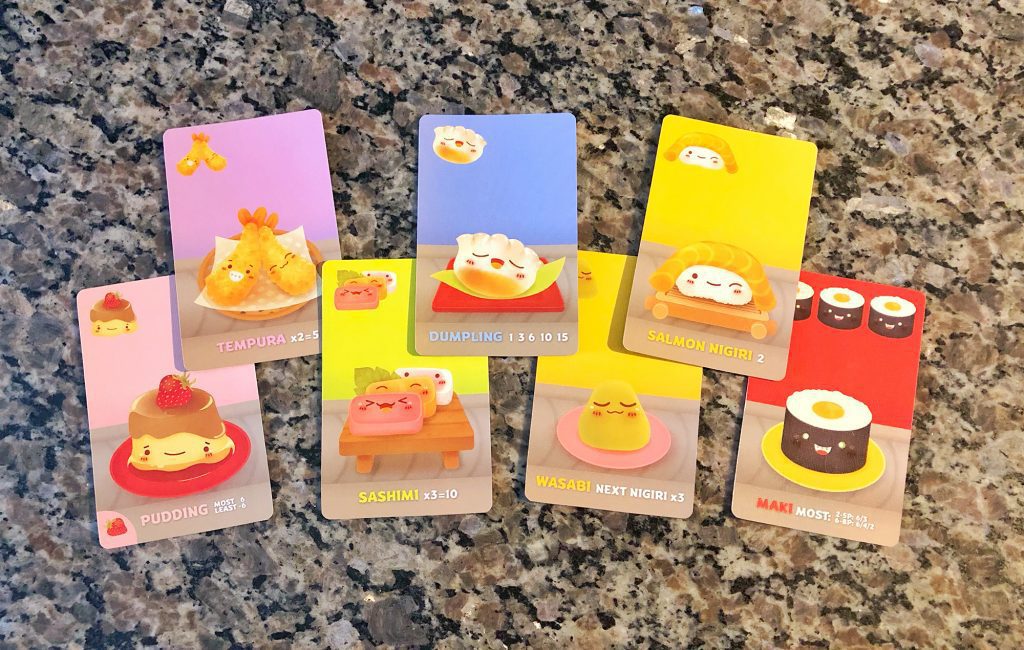
At the beginning of each round (of which there are 3) each player is dealt a hand of random cards which feature adorable images of anthropomorphized sushi on them. From this hand, the players will select a single card to keep. Then players reveal their selection and pass the remaining cards to their neighbors. This sequence of events continues until every player has played every card from their hand at which time end of round scoring is performed. Then new cards are dealt and the next round begins. When the game ends, whoever has scored the most points wins the game.
Enticing artwork aside, there are multiple reasons that Sushi Go has enjoyed such widespread popularity. First and foremost is the game’s play time. Sushi Go can be taught in under two minutes and only takes about 20 minutes to play. The rules are very easy to grasp making this the perfect game for people that might be new to the hobby. And there lies the rub.

Sushi Go’s simplicity is both its greatest strength and its greatest weakness. Sure, there are plenty of things to consider here: which cards to take, how taking those cards affects you, and how the ones left behind will affect your opponents as well as trying to remember which handful of cards holds what, but the game never feels very… challenging. A large part of the game comes down to whether or not you’re lucky enough to receive the cards that you were hoping to receive. This simplistic rules set is why Sushi Go sits at the bottom of this step ladder. It’s a fantastic game, but nowhere near as challenging as the next one.
Read our review of Sushi Go! Party.
Read our review of Sushi Roll! (the dice game).
Read our review of Sushi Go! Spin Som Dim Sum.
Fields of Green
Fields of Green, by Vangelis Bagiartakis (well known for his game Dice City), is the next step in our card drafting step ladder. Like Sushi Go, you’re dealt a hand of cards, choose one, and then pass the others on in an effort to score the most points by the end of the game. Whereas Sushi Go is primarily a set collection game, Fields of Green is both a resource management and tableau building game. Also, unlike Sushi Go where each person’s opening hand is determined by fate, every player in Fields of Green will have some direct influence over the types of cards that will be available for drafting in the upcoming round.
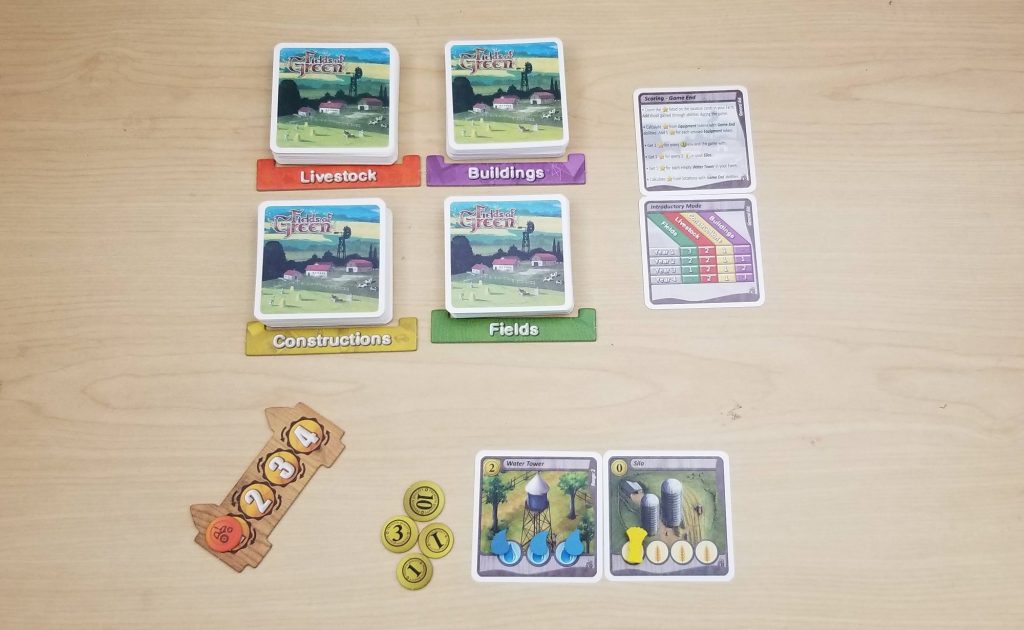
In Fields of Green your goal is to build up your farm and make it as prosperous as possible. The game consists of four rounds and at the beginning of each round the players will take turns drawing a total of 6 cards from 4 different card stacks: Fields, Livestock, Constructions, and Buildings. Multiple cards can be drawn from the same stack as long as the players draw cards from at least 3 of the 4 different stacks.Then each player selects a card from their hand and slides the unselected cards face down to their neighbor before simultaneously revealing and playing the chosen card into their tableau. Alternatively, the player can discard the card to buy a new water tower/silo, make some extra money, or to restore a location (which will make sense when I talk about what happens at the end of a round).
When adding cards to your tableau, it’s important to pay attention to where you’re placing them. Some score points based on how far they are away from other card types. Some require water from the water towers (which can only provide water up to 3 spaces away). Some might even score points based upon where they are placed regardless of the other cards in the tableau. When the round ends, each card that requires water or food (provided by silos) must be supplied that water or food or else it gets flipped over and will score no points or provide no benefits until it is restored in a later turn.
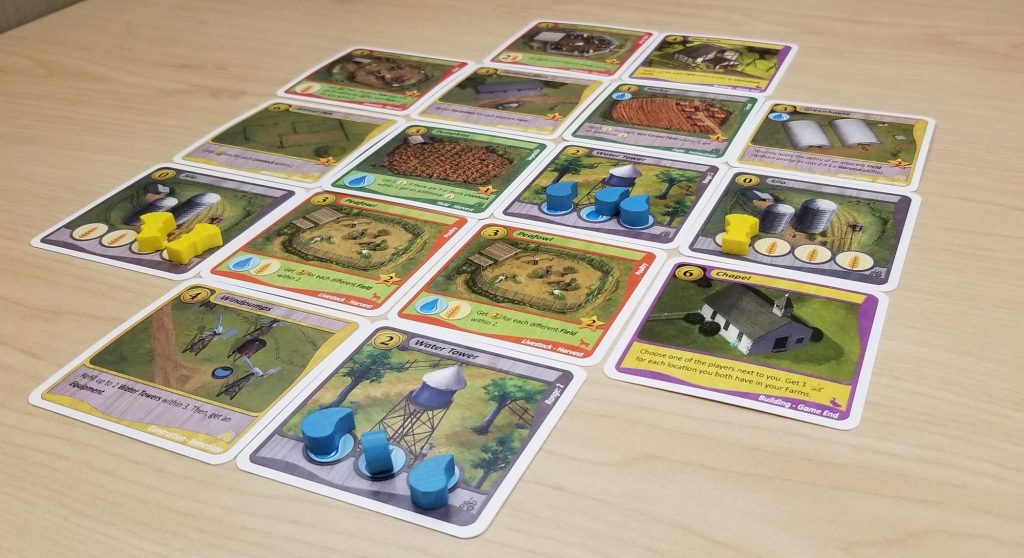
Trying to fit each drafted card into your farm setup in such a way as to make certain it can receive whatever it needs, provide whatever resources it might provide to other cards, or score as many points as possible is the real challenge that lies at the center of the game. From choosing which types of cards to add to the draft to which cards to select and what to do with those cards, every moment of Fields of Green presents the players with a delightful and titillating puzzle. Fields of Green has a much steeper learning curve than Sushi Go (not to mention a much longer playing time). There’s a lot more to do and consider and that’s why it sits here on the second step of our step ladder.
As complex as this game sounds, it’s definitely easier to wrap your head around than the next game on our list.
Ginkgopolis
Ginkgopolis, designed by Xavier Georges (co-designer of the magnificent dice drafting game Troyes) is an engine building, victory point collecting, area control game with, you guessed it, card drafting at its core. At the beginning of the game, there are nine tiles of 3 different colors laid out in a 3 x 3 grid. Each of these tiles has a number from 1 to 3 on it. Along the edges of this grid are placed 12 tiles with letters printed on them from A to L. During the course of the game, the players will be using cards played from their hands to build on, extend the borders of, and gain resources and victory points from this grid of tiles. When the game ends, the players will consider each cluster of same colored cards (called districts) and score each one separately according to who has placed the most of their resources into each one. The player with the most points when the game concludes will win the game.
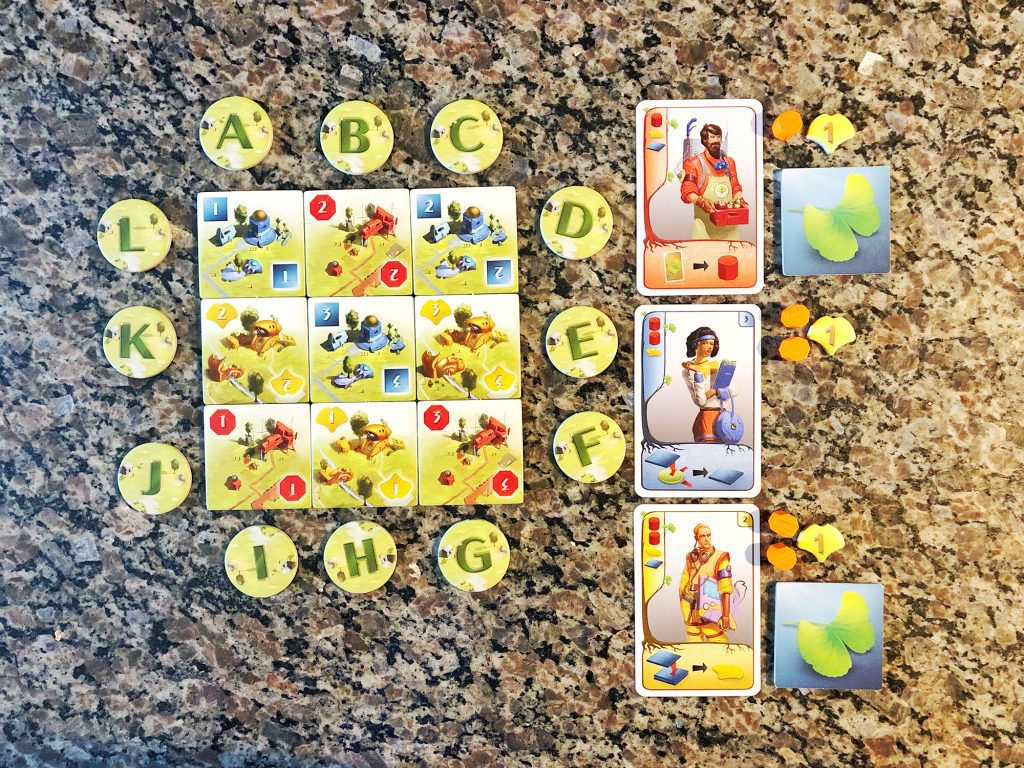
As a game round begins, each player will look at the cards in their hands. These cards, depending on what they are, will provide the player with one of three possible options: extend the edges of the grid, build on top of a tile already in the grid, or use the card to gain resources. Gaining resources or extra tiles is as easy as discarding a card and taking one or the other into your supply. If a player decides to extend the edges of the grid, then they will use a card along with one of their building tiles to do so. The tiles surrounding this newly built tile will earn them benefits. They will then mark this construction with one or more of their resource markers and a Construction Site pawn. The card used to perform the construction is then discarded.
If they build on top of a card already in the display, then they will get to keep the card that they used to build but the tile is added to the grid. The card will provide them with some kind of benefit for the rest of the game (i.e. – extra victory points each time they extend the edges or victory points if certain conditions are met at the end of the game). The newly built tile is marked in the same way as the previous example that extended the edges of the grid. Each level that is built upwards costs more and more resources to build so the players will have to try to balance their edgewise expansion against their upwards expansion so that they will always have a pile of resources on hand.
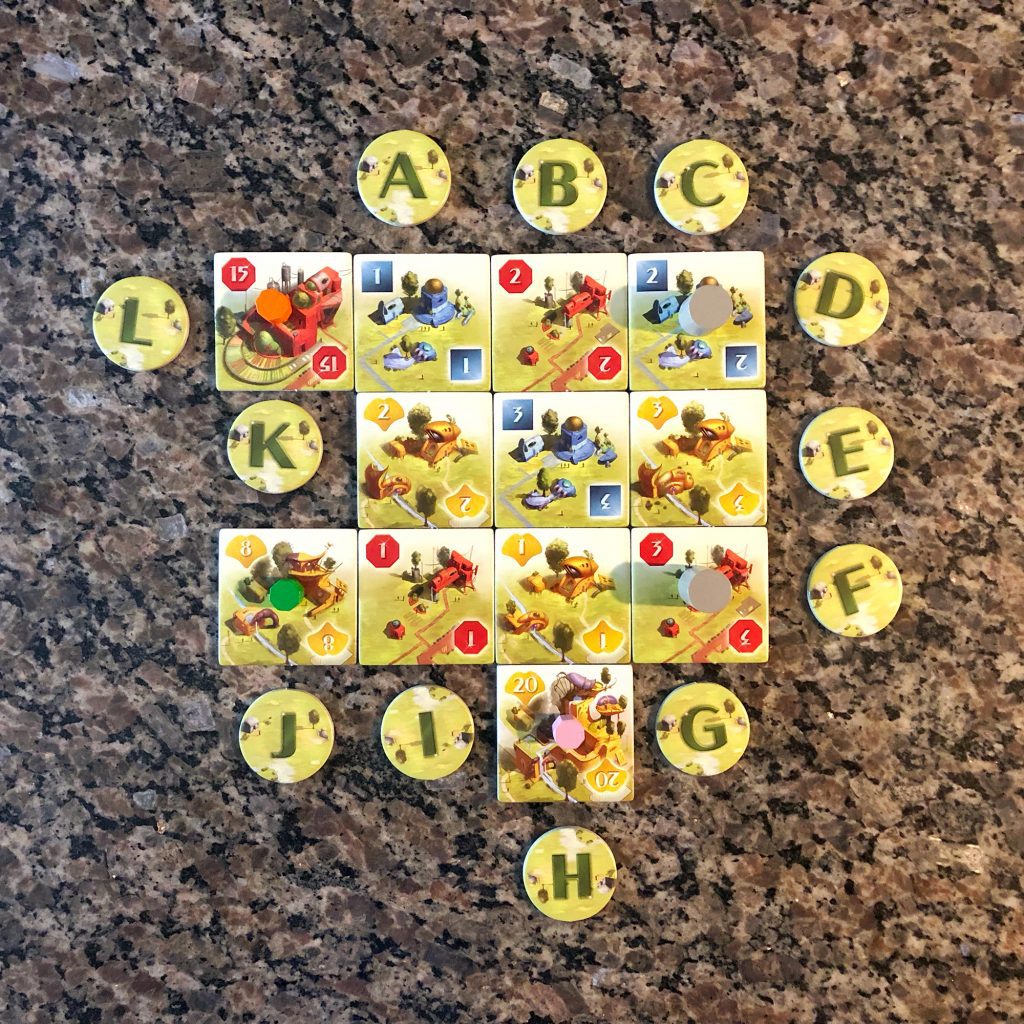
Each player begins the game with 3 different Character cards already in their possession which will help guide their early decisions in the game. These starting cards also determine how many resources, tiles, and/or victory point tokens each player begins the game with. As more cards are acquired, so too will the player’s engines grow. For example, early in the game your starting cards may only net you a free tile whenever you extend the edges of the grid. But if you should acquire even more cards that reward you for doing this, then the benefits for doing so become much better.
The reason for doing all of this is so that you can try to take control of the districts because this is where the majority of your points are going to come from. And that’s what makes this such a great game. Ginkgopolis plays at a fairly rapid pace, but it’s never easy deciding just what you should do next. Should you try to acquire some more cards so that you’re able to get more stuff or should you try to build a building to break someone else’s district in half? If you pass this card on to the next player, will they benefit from it? Maybe you should just discard it for resources instead to keep them from getting it. Ginkgopolis is a heavy, thinky game that requires you to always be on your toes and to always be thinking two or three steps ahead. And that is why it sits here at the top of our step ladder. The only drawback of Ginkgopolis is that it’s long out of print and it won’t be easy getting your hands on a copy. But if you do, it’s a game you’ll never let go. You can try out the game in a digital format for yourself on Boiteajeux.
Final Thoughts
The card drafting mechanic is nothing new, but its popularity is definitely on the rise. From light filler game to heavy brain burner, there’s definitely a card drafting game that will be right for you or your group.
Honorable Mentions:
I usually only mention three games in these step ladders and leave it at that. However, there are a few other games that fall into the card drafting category that I think are worth mentioning.
7 Wonders – 7 Wonders is the granddaddy of the card drafting genre. It’s been around for awhile. Designed by Antoine Bauza (who also created Hanabi), it’s gone on to be one of the most successful franchises in the board game industry. I decided not to include this game in my list for two main reasons: 1.) 7 Wonders plays best with 3 or more people. In the interest of keeping this list accessible to everyone, I decided to go with games that are still very strong with only two. 2.) Virtually every Top X Games list out there has 7 Wonders on it somewhere and I wanted this one to be different. My goal isn’t just to help guide you from one game to another, it’s also to hopefully introduce you to something that you may not have seen before.
Bunny Kingdom – Designed by Richard Garfield (designer of hit titles Keyforge and Magic: the Gathering), Bunny Kingdom is another game where card drafting takes center stage. This game almost made the cut, but I decided against it since Leslie Ewing has already written a fantastic review of it on our site. Also, in terms of complexity, I felt that moving from Fields of Green to Ginkgopolis was much more of a leap than Bunny Kingdom is. It’s still worth checking out, though!
Medieval Academy – A 2014 game in which players work to become better knights of the realm. Draft cards which allow you to improve your skills in all aspects of knighthood: Gallantry, Jousts, Education, Tournaments, King’s Service, Charity, and Quests. Collect points to beat your opponents, then use your winnings to further your advances on other boards. Medieval Academy is an excellent intro to card drafting and could easily have been put in the Sushi Go! slot.


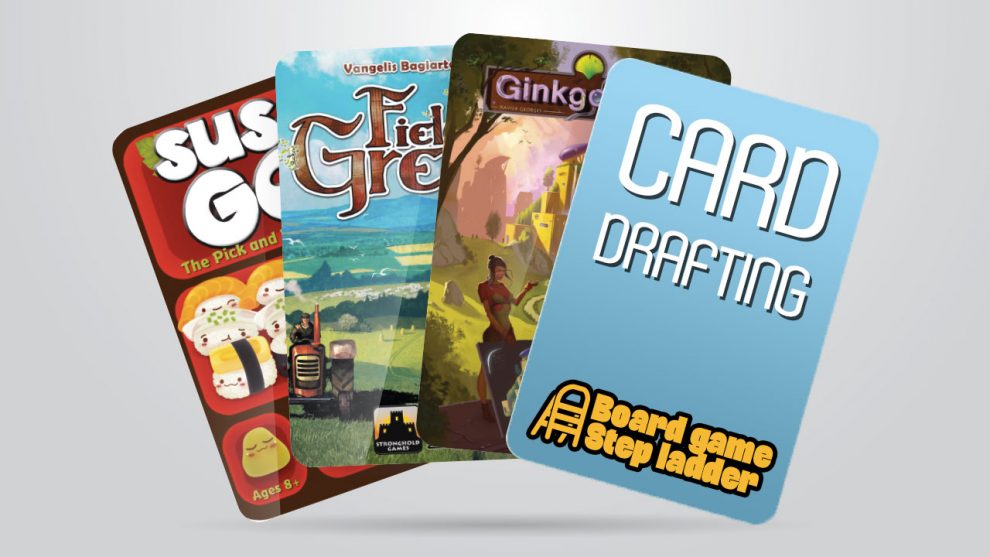
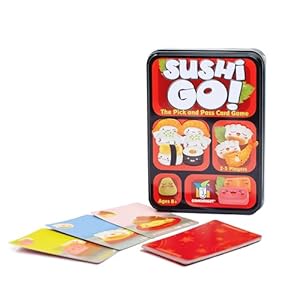




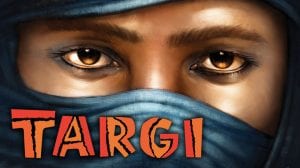





Add Comment